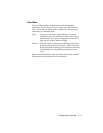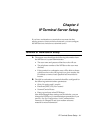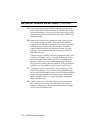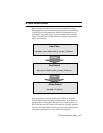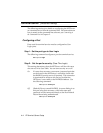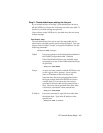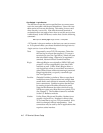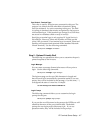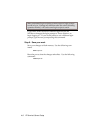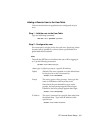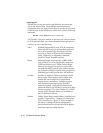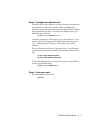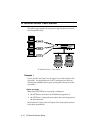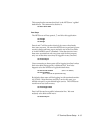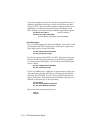IP Terminal Server Setup 4-7
Port Default - Terminal Type:
This value is used by all login users connected to this port. The
purpose is to inform the host what kind of terminal is being
used (or emulated). by users connecting to this port. The field
is a string of characters that must be recognized by the host as a
valid terminal type. Valid terminal type strings for a UNIX host
are stored in a database called termcap or terminfo.
Specifying a terminal type is only required if Login Service is
set to Rlogin However, Telnet and PortMux will also use this
value if one is entered. If no terminal type is entered, Telnet and
PortMux will assume dumb terminal mode (standard Network
Virtual Terminal). Use the following command:
set s<port #> termtype <emulation>
Step 5 - Optional Friendly Stuff
The following two parameters allow you to customize the port’s
printed response to dial in users.
Login Message
You can create a message (banner) that users will see prior to
login. Use the following command:
set s<port #> message <login message>
The login message can be up to 240 characters in length and
does not need to be surrounded by quotation marks (if you use
quotes, they will be included in the message). Use the carat ( ^ )
to designate the start of a new line. Example:
set s24 message U.S. Robotics^NETServer
Login Prompt
The following command allows you to customize the login
prompt for the port:
set s<port #> prompt <login prompt>
If you put the word $hostname in the prompt, the NETServer will
substitute the name of the port’s default host. The default
prompt for user login ports is $hostname login:. If you use
quotation marks, they will be included in the prompt.



